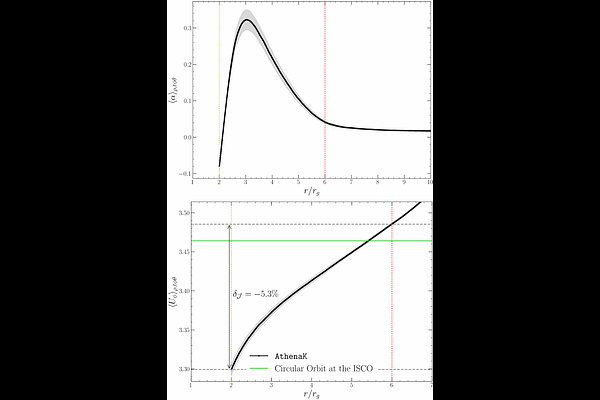A rapid black hole spin or emission from the plunging region?

A rapid black hole spin or emission from the plunging region?
Andrew Mummery, Jiachen Jiang, Adam Ingram, Andrew Fabian, Jake Rule
AbstractEmission from within the plunging region of black hole accretion flows has recently been detected in two X-ray binary systems. There is, furthermore, a possible discrepancy between the inferred spins of gravitational wave and electromagnetically detected black holes. Motivated by these two results we demonstrate, using theoretical calculations, numerical simulations and observational data, that the inclusion of emission from within the innermost stable circular orbit (ISCO) results in a black hole with a low spin producing a thermal continuum X-ray spectrum that mimics that produced by a much more rapidly rotating black hole surrounded by a disk with no emission from within the ISCO. We demonstrate this explicitly using the observed X-ray spectrum of a canonical soft-state high mass X-ray binary system M33 X-7. A vanishing ISCO temperature model requires a high spin $a_\bullet = 0.84\pm0.05$, as has been found previously in the literature. However, a disk around a Schwarzschild black hole can equally well (in fact slightly better) describe the data, provided that photons emitted from within the plunging region are included, and the ISCO stress is in line with that seen in numerical simulations of the accretion process. We then present an analysis of two further soft-state X-ray binaries (MAXI J1820+070 and MAXI J0637$-$430) which require the presence of intra-ISCO emission at high statistical significance. These two sources sit on the low-spin moderate-stress part of the degeneracy exhibited by M33 X-7, suggesting that when high quality data are available the high-spin low-stress region of parameter space is ruled out. We discuss how future advances in numerical simulations and data modelling will be essential to determining the spin of X-ray binary black holes which may well be systematically lower than current continuum fitting methods suggest.